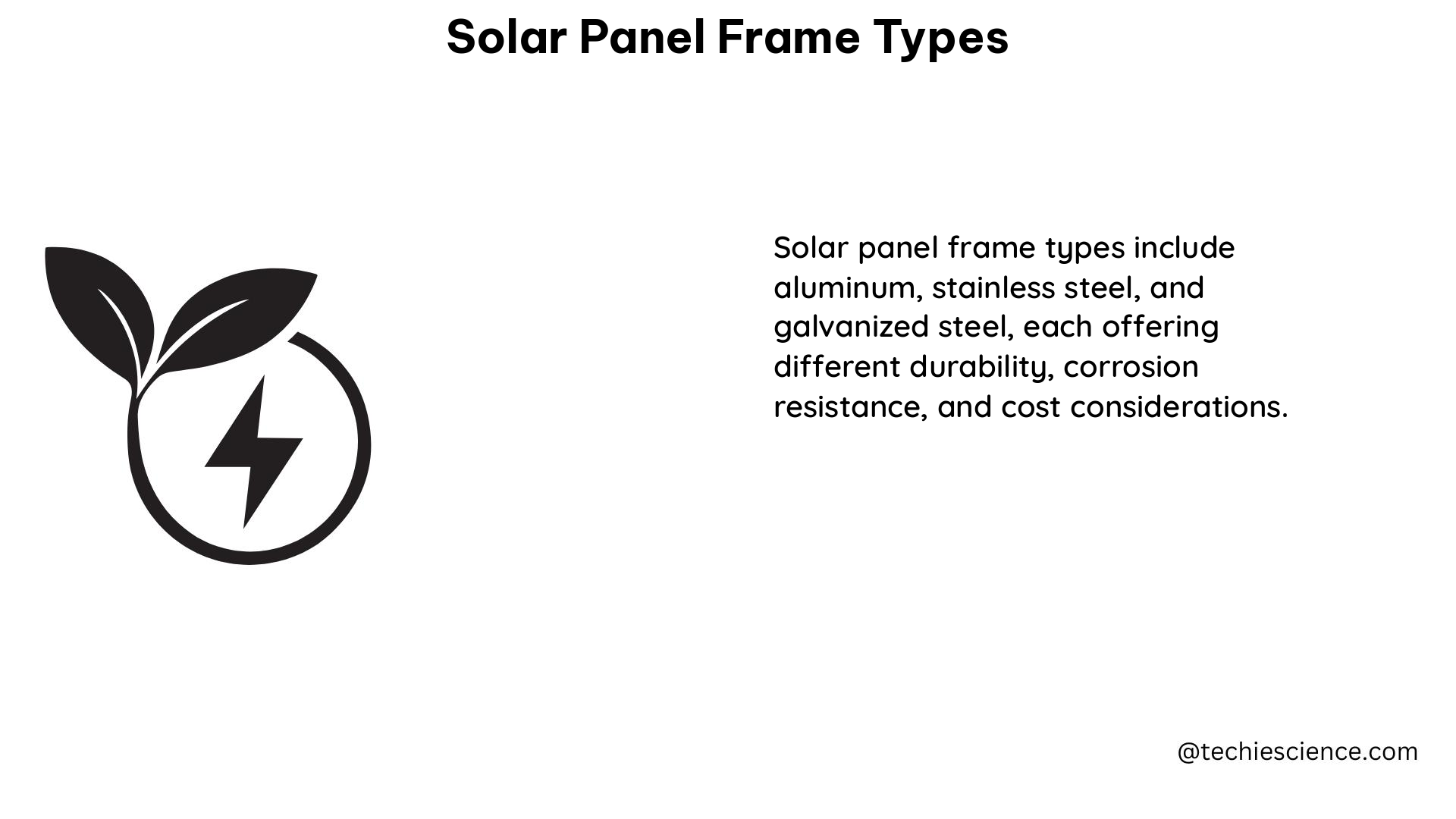Solar panel frames play a crucial role in the overall performance and durability of photovoltaic (PV) systems. These frames serve as the structural backbone, ensuring the stability, longevity, and protection of the solar panels against various environmental factors. In this comprehensive guide, we will delve into the technical specifications and measurable data points of different solar panel frame types, providing you with a detailed understanding of this essential component.
Material Composition
The most common materials used for solar panel frames are aluminum and steel. Each material offers distinct advantages and disadvantages:
- Aluminum Frames:
- Lightweight, with a typical density of 2.7 g/cm³, making them ideal for large-scale solar installations.
- Highly corrosion-resistant, especially when anodized or powder-coated, making them suitable for harsh environments.
- Durable and able to withstand the rigors of outdoor exposure, with a tensile strength ranging from 90 to 310 MPa.
-
Relatively easy to fabricate and customize, allowing for a wide range of design options.
-
Steel Frames:
- Stronger than aluminum, with a tensile strength typically ranging from 300 to 600 MPa.
- Heavier, with a density of around 7.8 g/cm³, which can increase the overall weight of the solar panel.
- More susceptible to corrosion, requiring additional protective coatings or galvanization to prevent rust.
- Generally more challenging to fabricate and customize compared to aluminum frames.
Frame Thickness and Weight

The thickness of solar panel frames can vary depending on the material and the desired level of structural support:
- Aluminum Frames: Typically range from 30 to 50 millimeters (mm) in thickness.
- Steel Frames: Generally range from 1 to 2 mm in thickness.
The weight of a solar panel frame can have a significant impact on the overall system design and installation process. Typical weight ranges for a 250-watt monocrystalline solar panel with different frame materials:
- Aluminum Frame: 18 to 22 kilograms (kg)
- Steel Frame: Up to 25 kg
Load Capacity and Structural Integrity
Solar panel frames must be able to withstand various loads, including wind, snow, and the weight of the panel itself. The load capacity of a frame is usually specified in pounds per square foot (psf) or newtons per square meter (N/m²):
- Load Capacity: Ranges from 30 to 60 psf (1465 to 2930 N/m²) for standard frames, and up to 100 psf (4900 N/m²) for reinforced or folded frames.
- Structural Integrity: Frames must be designed to maintain their structural integrity under these loads, with minimal deformation or failure.
Corrosion Resistance
Corrosion can be a significant issue for solar panel frames, especially in coastal or industrial environments. To address this, aluminum frames are often anodized or powder-coated to enhance their corrosion resistance:
- Salt Spray Test: A common method to measure corrosion resistance, as per ASTM B117. Frames that withstand 1000 hours of salt spray testing without significant corrosion are considered suitable for most applications.
- Anodization: Increases the thickness of the natural oxide layer on aluminum, providing enhanced protection against corrosion.
- Powder Coating: A durable, protective coating applied to the frame, offering additional protection against environmental factors.
Frame Design and Mounting Holes
Solar panel frames can be designed in various configurations to meet specific requirements:
- Flat Frames:
- More common and provide a simple, cost-effective solution.
-
Offer a straightforward design with minimal complexity.
-
Folded Frames:
- Provide increased strength and rigidity due to their reinforced design.
- Can withstand higher loads compared to flat frames.
- Slightly more complex and costlier than flat frames.
Solar panel frames typically have pre-drilled mounting holes to facilitate installation. The number, size, and position of these holes can vary between manufacturers and frame types:
- Standard Mounting Hole Patterns: Include 8-hole, 10-hole, and 12-hole configurations.
- Hole Size: Typically range from 8 to 14 mm in diameter.
- Hole Positioning: Varies based on the frame design and the specific solar panel model.
Frame Types: Standard vs. Low-Profile
There are two primary types of solar panel frames:
- Standard Frames:
- Have a more pronounced design, providing better structural support and protection.
- Offer a higher level of durability and resistance to environmental factors.
-
Slightly heavier and more visually prominent compared to low-profile frames.
-
Low-Profile Frames:
- Also known as frameless or edge-protected panels.
- Have a sleeker design, minimizing the visual impact of the frame.
- Still provide adequate protection and structural support for the solar panel.
- Typically lighter and more aesthetically pleasing than standard frames.
By understanding the technical specifications and measurable data points of these solar panel frame types, you can make an informed decision when selecting the most suitable frame for your solar installation project.
References:
– National Renewable Energy Laboratory (NREL) – Photovoltaic Module Reliability Workshop
– MDPI – Corrosion Resistance of Aluminum Alloy Solar Panel Frames
– NREL – Photovoltaic Module Reliability Assurance
– Solaris Renewables – What is the Carbon Footprint of Solar Panel Manufacturing?

The lambdageeks.com Core SME Team is a group of experienced subject matter experts from diverse scientific and technical fields including Physics, Chemistry, Technology,Electronics & Electrical Engineering, Automotive, Mechanical Engineering. Our team collaborates to create high-quality, well-researched articles on a wide range of science and technology topics for the lambdageeks.com website.
All Our Senior SME are having more than 7 Years of experience in the respective fields . They are either Working Industry Professionals or assocaited With different Universities. Refer Our Authors Page to get to know About our Core SMEs.